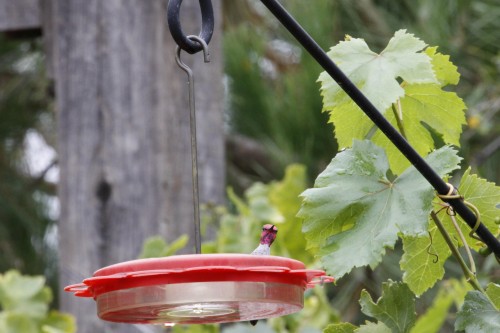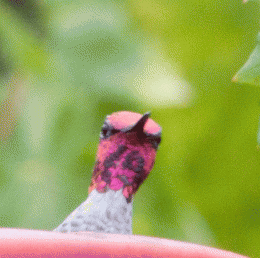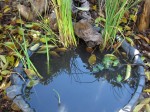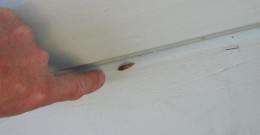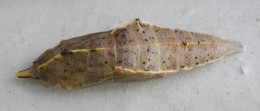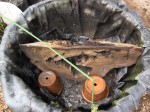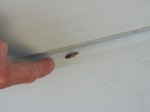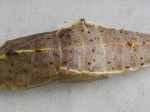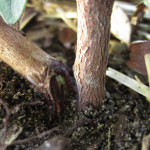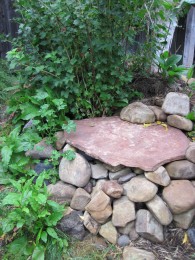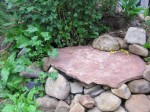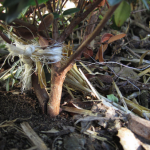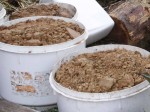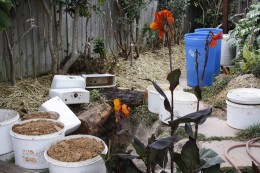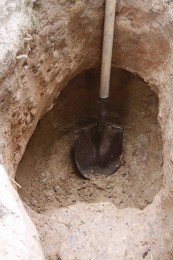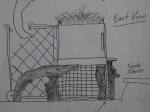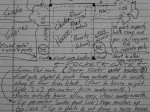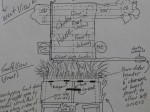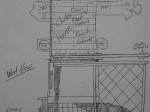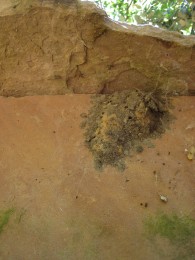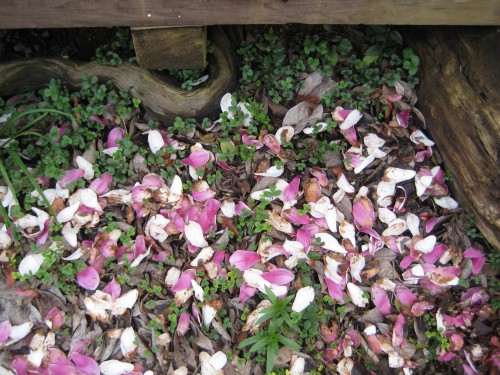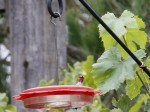
Garden Log:
1. Not much in the garden today, on this near-winter day. A brief hello while moving our 4 small potted citrus under a jasmine vine thatch along the deck lattice.
2. Divided up the kitchen washbasin water between the citrus, avocado, and paw paw tree pots. All the trees are young and small. The 4 avocado and 4 paw paw are patiently waiting to be unpotted and are residing in Anna’s Avocado Aviary alongside are back deck.
You the Habitat Gardener:
1. Our back deck has lattice along one side to increase privacy from the next door neighbors. Then, we planted jasmine at the base of the deck to grow on the lattice — awesome privacy, EVERGREEN plants and beautiful, fragrant flowers. Great cover for brave nest-building birds, wasps, and spiders. Habitat! Nowadays the jasmine could use a trim, but I knew there was a reason I didn’t get to it. Okay you young citrus trees in pots, wanting to escape the night’s frost, hide under here. So the citrus pots were pushed up against the lattice wall and are tucked under the overhanging jasmine thatch. The frost, which falls straight down, will fall directly below the canopy line of the jasmine and won’t leaf damage the citrus. Mission accomplished and I didn’t have to move the trees and cover them with a sheet elsewhere.
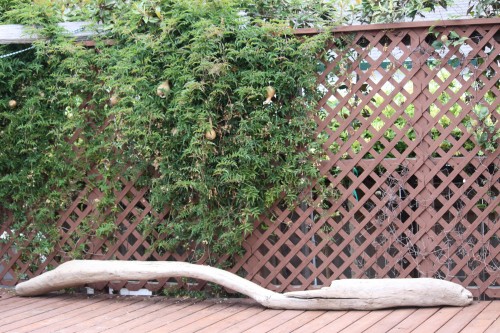
Jasmine Gondola Apartments alongside back deck. Since this pic (last March), the jasmine has grown much thicker. The citrus are resting comfy tonight up against the lattice, protected by the jasmine vine thatch overhead. The empty gourds hanging in the jasmine thatch provide shelter for spiders, crawling insects, and wasps.
2. Our Sunset zone here in Sebastopol, California is 15. Pretty cushy weather-wise. Dry summers with morning fog, cool winters with some frosting, almost no snow. So we are going to grow avocado and paw paw (the largest native North American friut, native to east of the Mississippi). Frost protection, especially during the trees’ young years will help them get to the old years. And some work may be worth it — both tree species deliver exceptional fruit and the trees are long-lived and attractive.
In order to more easily throw a tarp above the trees, they will be planted alongside our back deck. The deck structure will enable an easy secure point to toss a tarp above the trees. Note that I say “above” and not “on”. The covering, whether it be a sheet of cloth or plastic, should not rest on the trees wood or foliage. If touching like that, the cold above the tarp will transfer through the covering directly to the tree. So the key is to provide a covering AND an air space above it. And because I envision an aisle of avocado, paw paw, guava, and honeysuckle, all in bloom some day, the habitat is called Anna’s Avocado Aviary. Anna’s frequent our garden, even beyond the hummer feeder that hangs on the back deck.
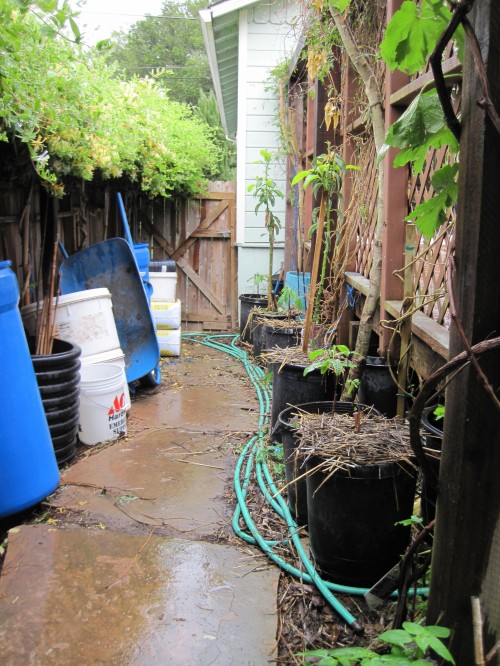
Anna's Avocado Aviary alongside deck lattice frame. The area was chosen because a frost-protecting tarp can be easily spanned, on especially cold nights, from the high lattice wall over to the honeysuckle trellis. The large potted trees alongside the deck are avocado, the smaller are paw paw.
A closeup of Anna’s Avocado Avairy’s guest of honor:
That’s all folks!
Tony

